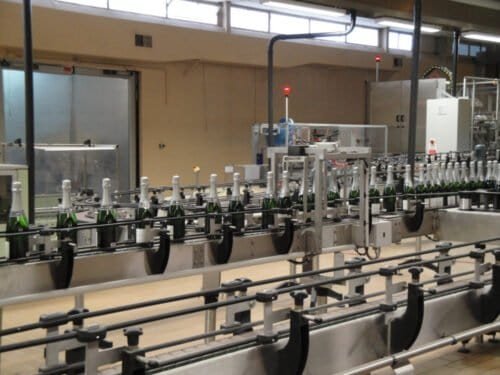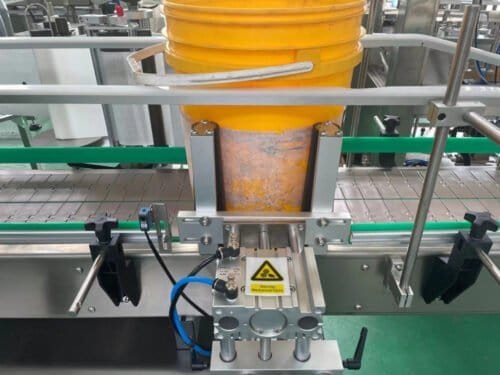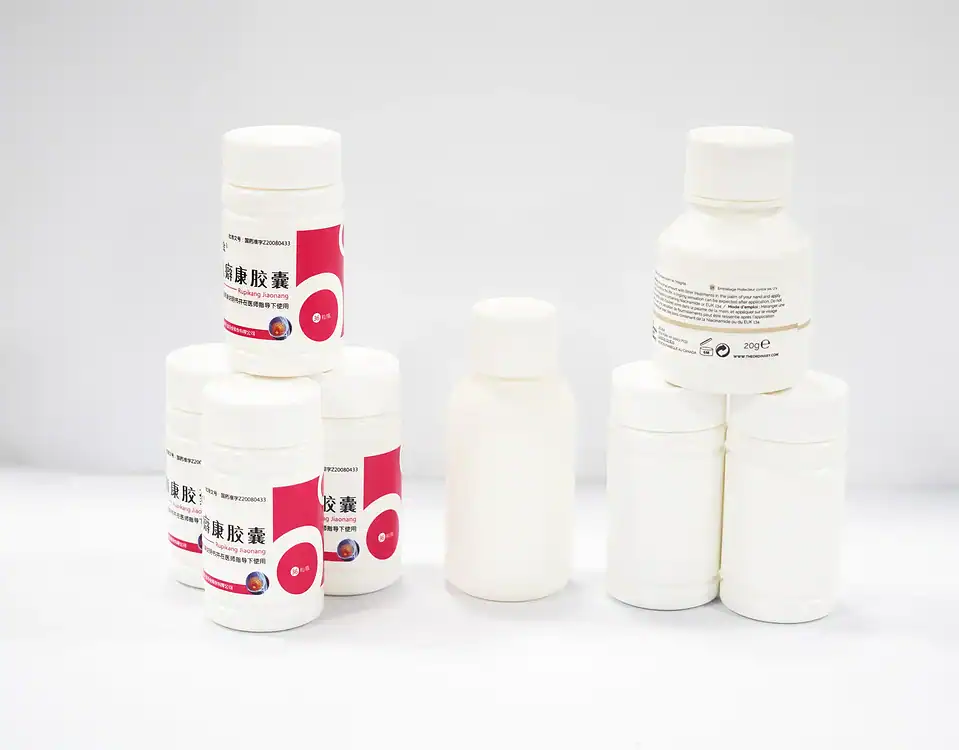
Top 8 V Mixing Manufacturers in 2025

Customer Visit Grand: Austrian Client Explores Capsule Filling Technology
How to Choose the Right Labeling Machine?
Introduction
When it comes to product packaging, effective labeling isn’t just about slapping on a sticker – it can make or break a product’s success. In fact, 94% of consumers say they are more likely to remain loyal to a brand with clear and accurate labels, and packaging design (including labels) influences the purchase decisions of about 72% of American shoppers. On the flip side, labeling errors are one of the leading causes of costly product recalls in the food and drink industry.
These facts underscore a simple truth: choosing the right labeling machine is a critical decision for any business in the packaging or manufacturing sector. This article will guide you through the types of labeling machines available, key factors to consider, important questions to ask, and will even compare semi-automatic vs. fully automatic models.
By the end, you’ll have a clear roadmap to find the best labeling machine for your needs – whether you run a small craft brewery or a large manufacturing plant.
Types of Labeling Machines
A fully automatic labeling machine on a bottling line. This system applies labels to champagne bottles at high speed in a synchronized sequence. Large manufacturers use automated labeling machines like this to maximize throughput.

Labeling machines come in various types and configurations, each suited to different production needs. At the most basic level, manual labeling tools (like handheld label applicators) require an operator to apply each label by hand – these are inexpensive but slow, suitable only for very low volumes. Next up are semi-automatic labeling machines, which often sit on a tabletop or bench.
An operator places the product (for example, a bottle or jar) and activates the machine (often by a foot pedal or button); the machine then applies the label. Semi-automatic units significantly increase speed and consistency over hand labeling, yet still require human labor for each item. Finally, there are automatic labeling machines (or fully automatic systems).
These machines integrate into a production line, automatically dispensing and applying labels to products moving along a conveyor. An automatic labeling machine can handle high speeds with minimal human intervention.
There are also specialized models – for instance, a bottle labeling machine is designed to wrap labels precisely on cylindrical containers, while others are built for flat boxes, pouches, or even irregular items. Understanding these categories is the first step: you’ll need to decide which level of automation and type of machine aligns with your operation’s scale and the products you’re labeling.
Choosing the right labeling machine means evaluating multiple factors to ensure the equipment fits your needs. According to packaging experts, buyers should assess everything from technical capabilities and reliability to integration and cost when selecting packaging machinery.
Start with your production volume and speed requirements – how many units per hour or day do you need to label? A small business hand-labeling 100 products a day has very different needs than a factory labeling 10,000 bottles an hour. Make sure the machine’s throughput matches your demand (with some extra capacity for growth or peak times).
Next, consider your product and label specifications. Are you labeling round bottles, flat boxes, or fragile packets? The shape and size of your product will dictate the style of machine (for example, wrap-around labelers for bottles vs. tamp label applicators for flat surfaces). Label material and size matter too – ensure the machine can handle the label rolls or cartridges you plan to use, including any printing needs if you require date codes or barcodes on the label.
Don’t overlook accuracy and consistency: proper alignment and adhesion of labels are crucial for a professional look and to meet regulatory standards. (In regulated industries like food or pharma, even a small misplacement can be critical.)
Floor space and facility integration are practical considerations as well – a fully automatic labeling machine may require conveyor hookups and more space, whereas a semi-automatic unit might fit on a tabletop. Lastly, think about maintenance, support, and training.
A more complex machine might boost output but could be challenging to maintain without skilled technicians. Factor in the availability of customer support, spare parts, and the learning curve for your staff to operate the equipment safely and efficiently.
Some labeling machines are designed for specific products – here, a three-roll system applies a label onto a large bucket. Matching the machine to your product’s shape and size is crucial for smooth operation and avoids label waste or misapplication.

Questions to Ask Before Purchasing
Before you commit to a labeling machine, it’s wise to pause and ask a few critical questions. Doing so will ensure you’re fully prepared and that you select a machine that truly fits your business needs. Here are some key questions buyers should ask (or be prepared to answer when speaking with suppliers):
What are our labeling volumes and speed requirements? (Define how many items you need to label per hour/day and peak capacity. This will narrow down suitable models based on throughput.)
What products and label types will we run? (Consider sizes and shapes of your containers – e.g. bottles, boxes, bags – and the label materials. A bottle labeling machine might be ideal for round containers, whereas flat packages may need a different approach.)
How automated do we want the process? (Can we dedicate an operator to a semi-automatic machine, or do we need a fully automatic labeling machine integrated into our production line? This ties into labor availability and desired efficiency.)
What is the total cost of ownership? (Beyond the purchase price, factor in installation, training, maintenance, and operating costs like label stock or ink if it’s a print-and-apply system. Also ask about the machine’s expected lifespan and ROI.)
Is the machine easy to operate and maintain? (Ask about the user interface, changeover process for different labels or products, and what daily maintenance is required. Also ensure spare parts and technical support are readily available.)
Does it meet regulatory or quality requirements? (For instance, food or pharmaceutical environments may need machines that are stainless steel or washdown-ready. Also confirm the machine can consistently place labels accurately to meet any labeling regulations.)
By working through these questions, you’ll have a clearer picture of what you need and be better equipped when evaluating options or talking to sales representatives. Remember, the goal is not just to buy a machine, but to buy the right machine that will serve your operation well for years to come.
Semi-Automatic vs. Fully Automatic: A Comparison
One of the biggest decisions is whether to go with a semi-automatic labeling machine or invest in a fully automatic system. Both have their merits, and the right choice depends on your production scale, budget, and workflow. Below is a comparison chart highlighting the differences between a typical semi-auto labeler and a fully automated labeling machine:
| Aspect | Semi-Automatic Labeling Machine | Fully Automatic Labeling Machine |
|---|---|---|
| Throughput Speed | Moderate – operator-dependent (e.g. up to ~500–1,500 labels/hour, depending on labor) | High – machine-driven (thousands of labels/hour with consistent output) |
| Labor Requirement | Requires an operator to load/align each item and trigger labeling for each cycle | Minimal – mostly automated once running; one operator can oversee multiple machines or an entire line |
| Ideal For | Small to mid-sized batches, batch processing, best for small businesses or startups with lower volume | Continuous high-volume production, larger manufacturers, 24/7 operations where speed is critical |
| Flexibility | Often quick to change over for different products or label sizes; good for multiple product types in low volumes | Can be part of an integrated line; designed for specific product runs – changeovers are possible but take more time and planning |
| Footprint & Setup | Typically compact, tabletop or standalone units; simple installation | Larger equipment that integrates with conveyors; requires more floor space and setup/integration effort |
| Cost | Lower initial cost (tens of hundreds to a few thousand dollars) and lower power requirements | Higher initial investment (can be tens of thousands of dollars) but lower labor cost per unit; usually justified by scale of output |

Grand labeling machine can always complete efficient labeling tasks in complex environments, accurately and reliably
Buyer’s Checklist
To wrap up, here’s a short checklist to ensure you’ve covered all your bases before purchasing a labeling machine. Use this as a final actionable guide:
Define your requirements: Document your product types, label sizes, and volume expectations (current and projected).
Set a budget (and ROI goal): Know your price range and estimate how quickly the machine will pay for itself through labor savings or increased output.
Compare options: Research multiple models/vendors. Look at reviews or case studies for similar applications (e.g. best labeling machine for small business use-cases if you’re a small firm).
Consider integration needs: If you have an existing production line, ensure the new labeler can sync with your conveyor or system (check for compatible speeds, sensors, etc.).
Request a demo or sample: Whenever possible, see the machine in action. Send your product and labels for a test run or watch a demo video to spot any potential issues.
Check support and training: Confirm what training is provided and what the after-sales support looks like (warranty, spare parts availability, technical assistance).
Plan for maintenance: Understand the maintenance schedule and costs. Ensure you have a plan for regular servicing to keep the machine running optimally.
By following this checklist and the insights above, you’ll be well prepared to choose the right labeling machine for your operation. The goal is to find a machine that not only applies labels, but does so in a way that boosts your efficiency, upholds your quality standards, and grows with your business. With the right choice, your product labeling process will be smooth, compliant, and cost-effective – letting you focus on getting your great products out the door and into customers’ hands.



